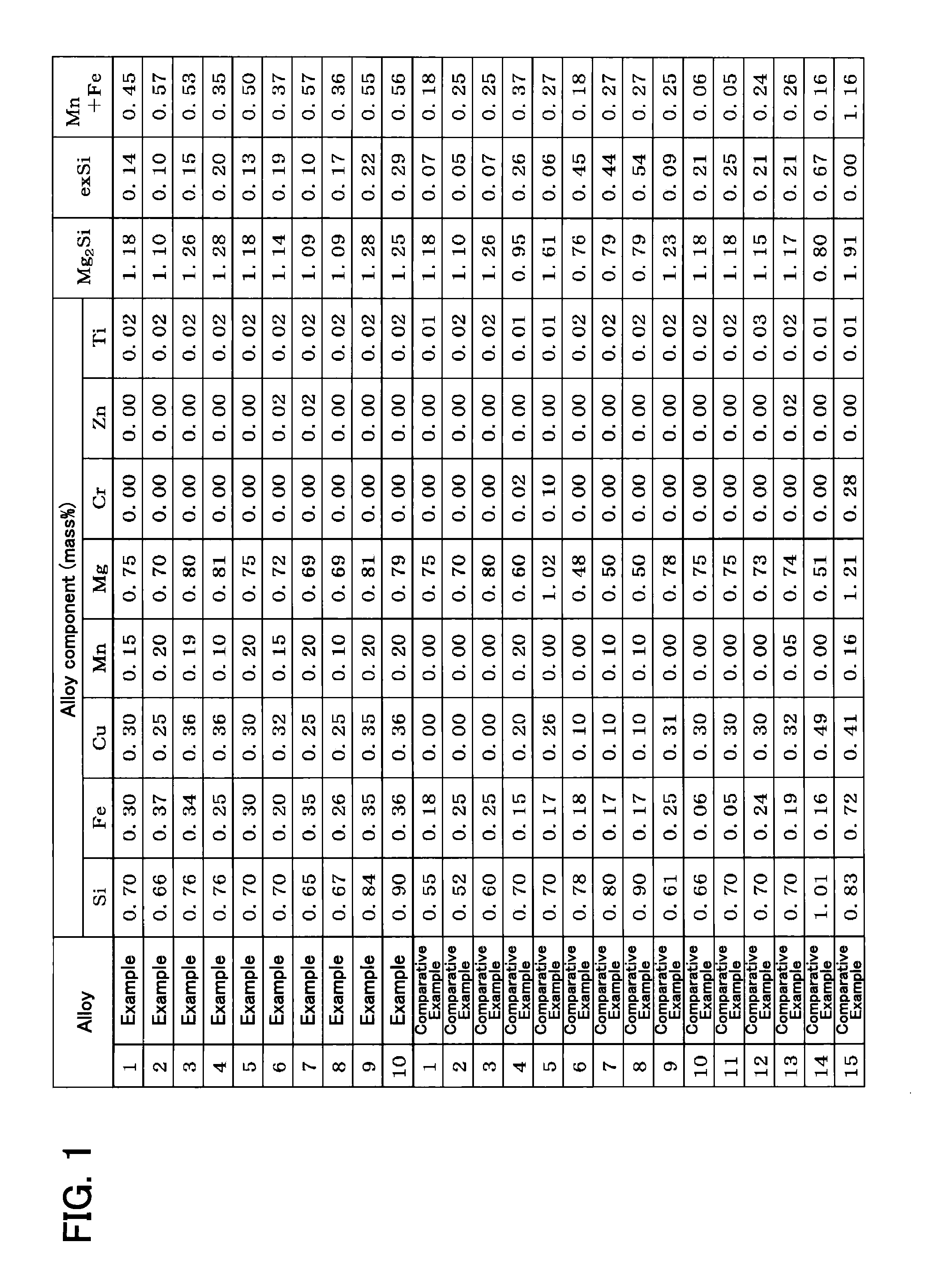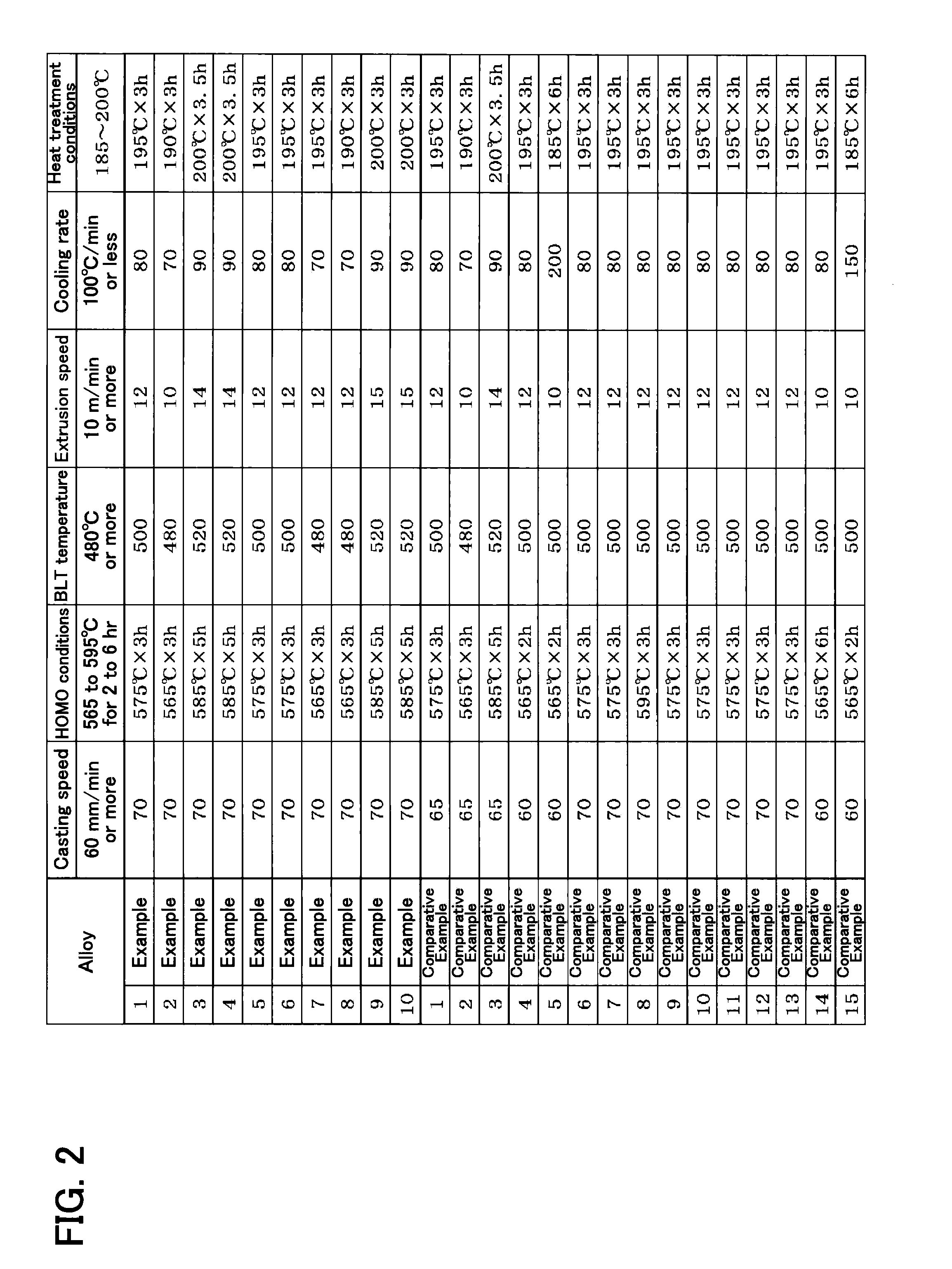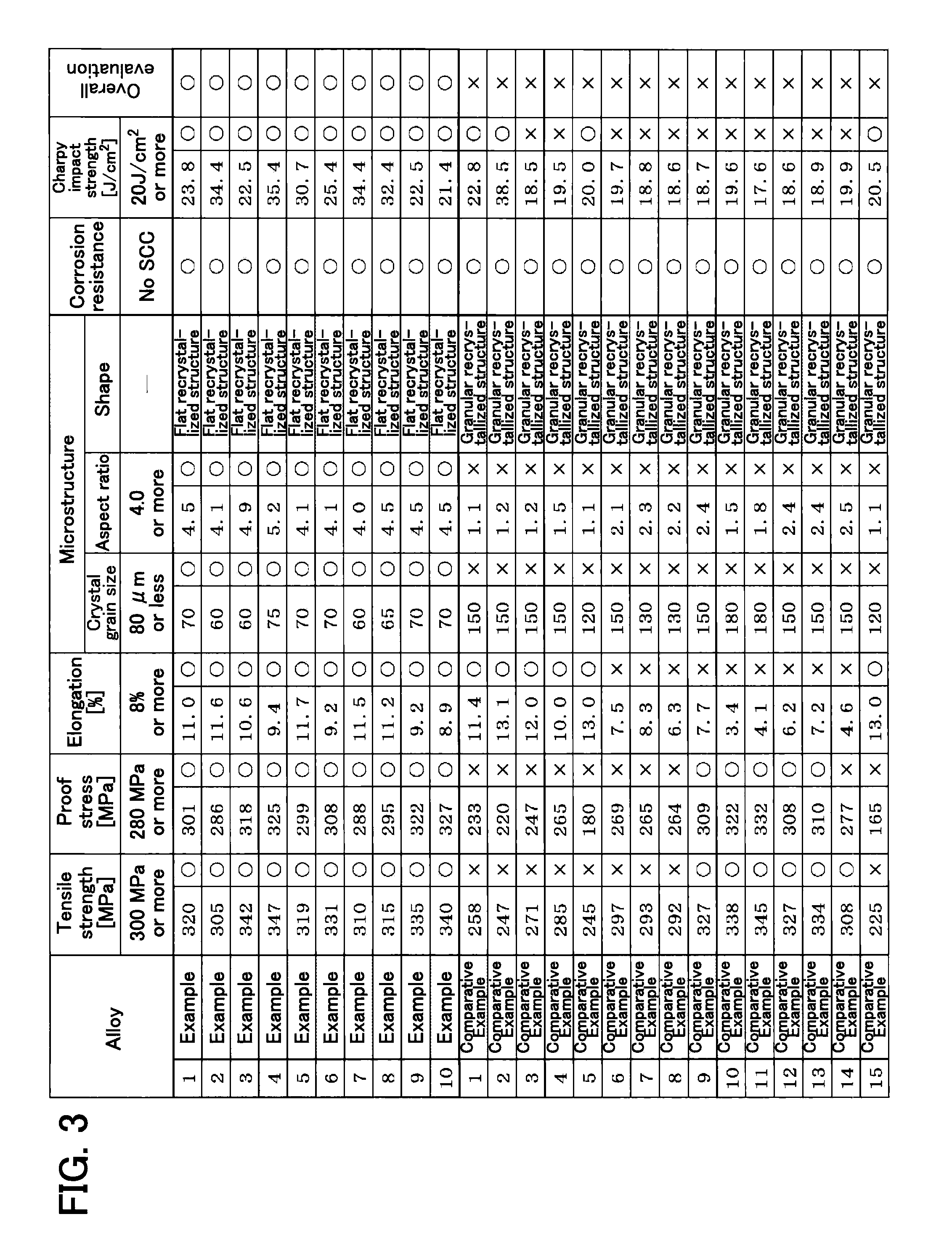High-strength aluminum alloy extruded shape exhibiting excellent corrosion resistance, ductility, and hardenability, and method for producing the same
- Summary
- Abstract
- Description
- Claims
- Application Information
AI Technical Summary
Benefits of technology
Problems solved by technology
Method used
Image
Examples
Embodiment Construction
[0048]Billets that differ in chemical composition were cast, extruded, and evaluated as described below.
[0049]A molten metal including the alloy components shown in FIG. 1 was is prepared, and cast at a casting speed 60 mm / min or more to obtain a cylindrical billet having a diameter of 8 inches.
[0050]FIG. 2 shows the subsequent production conditions.
[0051]The cast billet was homogenized at 565 to 595° C. for 2 to 6 hours (see “HOMO conditions”).
[0052]The billet was preheated to 480 to 520° C., and extruded to obtain an extruded shape having a hollow cross-sectional shape (single-hollow cross-sectional shape) (W=50 mm, H=40 mm, t (thickness)=3 mm).
[0053]FIG. 2 shows the extrusion speed and the cooling rate.
[0054]The cooling rate was set to 50 to 100° C. / min in order to achieve press quenching by air-cooling using a fan. Note that the cooling rate was set to 200° C. / min in Comparative Example 5.
[0055]The extruded shape was cooled to room temperature, and subjected to artificial aging ...
PUM
| Property | Measurement | Unit |
|---|---|---|
| Percent by mass | aaaaa | aaaaa |
| Percent by mass | aaaaa | aaaaa |
| Percent by mass | aaaaa | aaaaa |
Abstract
Description
Claims
Application Information
 Login to View More
Login to View More - R&D
- Intellectual Property
- Life Sciences
- Materials
- Tech Scout
- Unparalleled Data Quality
- Higher Quality Content
- 60% Fewer Hallucinations
Browse by: Latest US Patents, China's latest patents, Technical Efficacy Thesaurus, Application Domain, Technology Topic, Popular Technical Reports.
© 2025 PatSnap. All rights reserved.Legal|Privacy policy|Modern Slavery Act Transparency Statement|Sitemap|About US| Contact US: help@patsnap.com



